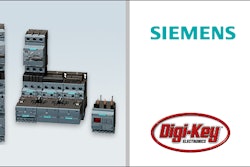
More and more companies are implementing production software; the question is how to ensure that your project will be successful. The secret answer concerns education. Everyone knows that education and training are critical after a system has gone live, but new research on companies using manufacturing execution systems (MES) or manufacturing operations management (MOM) indicates education may be even more important before you commit to a system implementation project.
As the bar chart shows, a recent Gartner report indicates that the number one obstacle to a successful MES/MOM strategy is that the cost, business case, or ROI are not properly understood. Though the ses details will be unique to each company, the approach to calculating it is actually common across all manufacturing and production industries. To help this process, the people driving these projects should have a shared foundation of understanding to develop that. MESA is now in the process of finalizing a guidebook on building a business case and justifying MES/MOM investments.
Other education-related obstacles revealed in this survey of those with MES/MOM already implemented include:
• resourcing and personnel issues;
• ability to meet functional requirements originally defined;
• cultural buy-in;
• executive buy-in and change management; and
• agreement on common processes.
The best approach for a successful MES/MOM project is common across companies and even across industry segments. MESA’s mission with its Global Education Program (GEP) is to establish a baseline of knowledge throughout the industry with common definitions, tools and methodologies. Once buyers and sellers share this understanding, we can reduce the risk and time to get systems up and running.
This Gartner report shows that while the benefits are real, so are the risks in MES/MOM implementations. Gartner states that MES/MOM applications “deliver hard-dollar results for local manufacturing operations by attacking immediate cost-cutting and continuous improvement opportunities.” The report also shows that many did not achieve the full benefits they expected.
>> MES/MOM Education: Get up-to-date on all you need to know for successful MES implementations. Visit//www.myenum.com/it/mes
This correlates to another issue that the MESA GEP addresses: how to create a Center of Expertise (COE) for MES/MOM. Over one-third of the companies in the Gartner study do not have a COE, nearly 40 percent of those respondents report getting less than 75 percent of their hoped-for benefits, and a further 30 percent don’t know what their business gains have been. In contrast, 60 percent of those with a COE realized 75 percent to more than 100 percent of their planned benefits.
Creating a COE, building a business case and planning an MES/MOM project properly require an investment. MESA has continuously made investments in developing the GEP so that companies can get a head start on all of these critical issues for project success.
This year, MESA will roll out further improvements to the program, extending the credibility and knowledge a graduate gains in the industry. Do you have your Global Education Program certificate yet?
Note:在本专栏中提到来自Gartner的数据report Governance, Not Technology, Drives Measurable Business Value From MES, published in December 2012. It was conducted in collaboration with MESA and we thank the MESA members who took the time to respond to this survey.
>> Julie Fraser is a leading industry researcher and advisor in manufacturing solutions with her company Iyno Advisors. Reach her atjuliefraser@mesa.org.



















